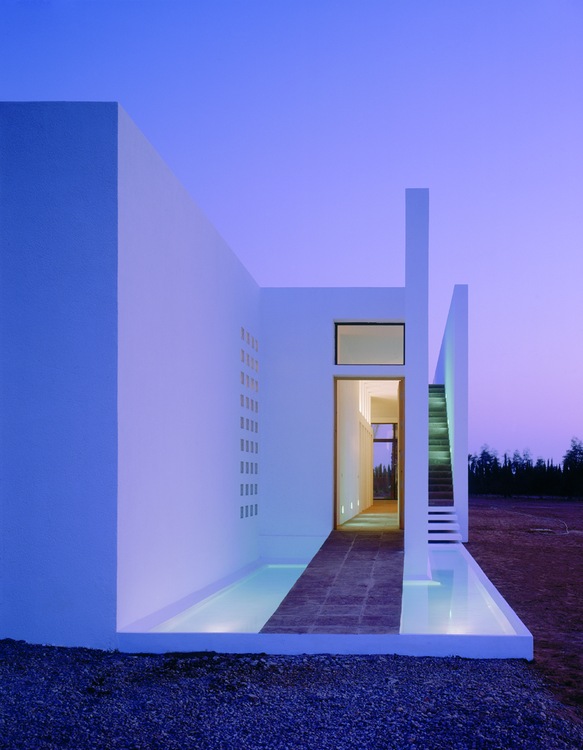
Technical details adopted to cope with the climate:
The owner had grown up in Saudi Arabia and Dubai. His mother, who currently lives in the house, is an Egyptologist. She had worked on archeological excavations in Egyptīs Valley of the Kings, for the Brussels Archaeological Museum, in the 1960s.
That was a great opportunity for me. The inhabitants of such a house had to be sufficiently able to adapt to living in the desert. The temptation to transplant Western lifestyles and comfort levels to Morocco is often quite ridiculous. It is not uncommon to see sprawling lawns in Marrakech with elaborate watering systems. Why in the world would anyone want to disturb that environment at all costs? To transform it, at any price? Isnīt it better to live in a place thatīs best suited to oneīs own lifestyle? The desert doesnīt embrace intruders easily...
The techniques adopted to respond to the particular climate of the region are those commonly used and proven in the Maghreb. We chose to use local materials, primarily for rational, economic reasons. Overly sophisticated solutions and imported materials - often demanding tedious implementation and expensive maintenance - were on the whole rejected.
There is, on average, between 10 and 20 days of rainfall per year in the region. There may be two major rainstorms each fall, which could flood the land. For that reason, we followed the advice of the Moroccans and elevated all buildings by nearly 50 cm.
The water for the house comes from glaciers on the Atlas Mountains. A well was dug on the land, to a depth of approximately 30 to 40 meters.
The land is on the edge of the area upon which construction was allowed. Beyond it, that endless Atlas Mountain landscape stretches out in the background. On a clear day, it is quite breathtaking.
This flat, barren desert land is full of hidden riches (with precious water lying less than 40 meters underground). It allows for clear visual connections between the separate buildings, the horizon and the earth itself. The smallest wall in the distance is magnified in this lunar landscape.
Views of the snow-covered Atlas Mountain range emerge on clear days, from October to May.
The final orientation of the house stems from that desire to see the Atlas, which has always haunted the client. He chose this land, near Marrakech, primarily for its stunning views of the mountains. We all worked together for the ideal positioning of the main house on the land. But it was the client alone who finally decided on the exact positioning of the house, to the exact degree. The end result is a compromise between climate considerations and the desire to have the most beautiful views of the Atlas from the living areas.